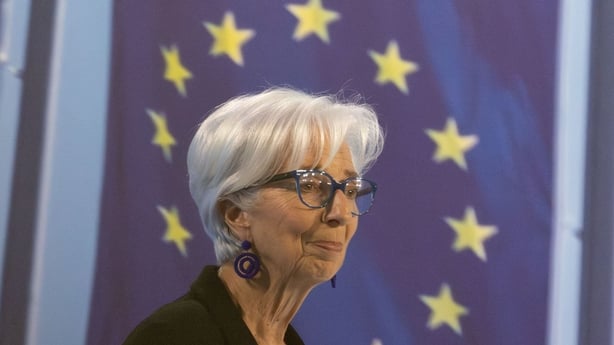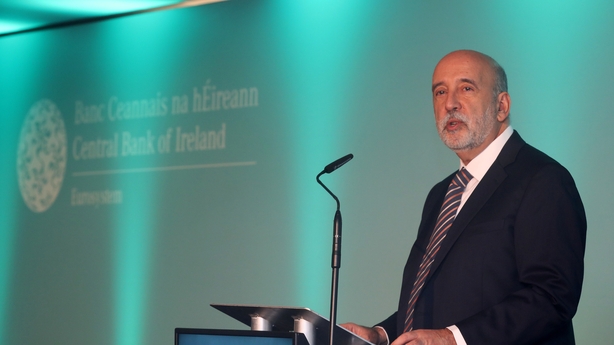The hints have been dropped and thoughts have been nudged.
The customary trailing of remarks by members of the ECB's Governing Council before they all meet in Frankfurt next week leaves little doubt interest rates will be increased by another quarter of one percent.
This will be the eighth increase in rates since the ECB reversed a decade of monetary policy which saw rates dip below zero.
Base deposit rates in the euro area are currently 3.25% and if the nods and winks are correct, that will be 3.5% after next Thursday.
What will happen next?
For that, we need to read the runes a bit.
The Governor of our Central Bank, Gabriel Makhlouf, said this week another rate rise in July is "probable".
Significantly, he also dismissed in no uncertain terms as "speculation" market expectations that rates could be cut early next year. His view is that higher rates will be here to stay for some time.

The President of the ECB, Christine Lagarde, told the European Parliament that while there has been some "moderation" there was "no clear evidence" that underlying inflation has peaked.
That was read as very much leaving the door open for another rate rise in July.
To complete the picture, Isabel Schnabel, a member of the Executive Board of the ECB told the Belgian newspaper De Tijd that given the "high uncertainty about the persistence of inflation, the costs of doing too little continue to be greater than the costs of doing too much."
So, the signs so far are the ECB intends to increase rates again before the end of the summer, with the usual big caveat: Decisions will be based on whatever data emerges between now and the next meeting in July.
We will also have an updated set of ECB staff economic projections next week to add to the mix. So far, the backdrop is that the euro area slipped into a technical recession, barely, in the first three months of this year.
This was largely thanks to the wild gyrations of the multinational muddle of numbers that is our GDP figures (our GDP fell by 4.6% in the first quarter despite a 2.7% increase in Modified Domestic Demand...a textbook case of statistical confusion).
The initial estimates for euro area inflation in May came in lower than had been expected.
It fell to 6.1% with core or underlying inflation slowing from 5.6% in April to 5.3%.
Our own inflation numbers out this week encapsulate some of what’s happening across the euro area.
The headline rate fell to 6.6%.
A big factor is the effect of last year’s jump in energy prices fading from the numbers. But underlying core inflation, which strips out food and energy, actually rose to an annual rate of 6.8%.
This means the price of other things, principally services like hotels, hairdressing and repairs are all going up as the effects of inflation continue to reverberate through the economy.
Also, the fall in food prices has been fairly marginal to date.
Food inflation fell from just over 13% to 12.6% last month.
There are high hopes amongst consumers that food prices may be headed downwards but there is also a well-worn phrase involving poultry and eggs which might be appropriate here.

Gabriel Makhlouf made another pointed remark this week.
He was echoing a key message already made clear in ECB meetings this year and by Christine Lagarde at the European Parliament this week.
He said that if fiscal policy "gets in the way" of monetary policy, then monetary policy "will have to work harder."
This means if governments, like our own, continue to spend to alleviate the pain of inflation, then interest rates may have to go higher or stay higher for longer.
It is a message reinforced by the Irish Fiscal Council’s urging this week for the Irish Government to stick to its 5% spending rule in the upcoming Budget.
With Government TD’s and the Opposition hammering on the doors of Merrion Street with ideas for spending and tax cuts, it won’t be easy for the ministers for Finance and Public Expenditure to protect our pile of corporate tax bounty by citing fears of stoking inflation.
This week saw the first partial reversal of the cost-of-living package reduction in excise on petrol and diesel. Low prices on international oil markets have dulled the pain.
The first unsubsidised electricity bills will arrive over the summer.
Despite prices continuing to fall on wholesale markets, many domestic customers face the same high charges inflicted last October.
It will bring home for many that the cost of inflation really hasn’t gone away.






